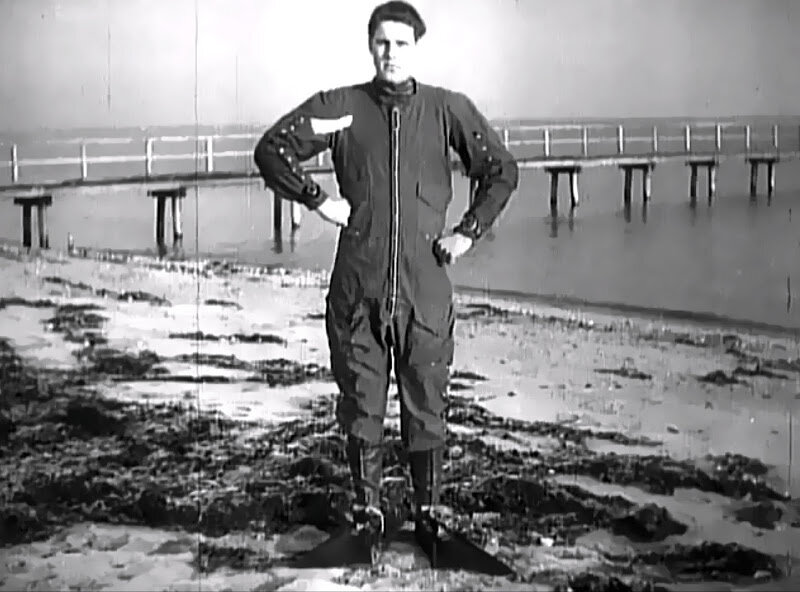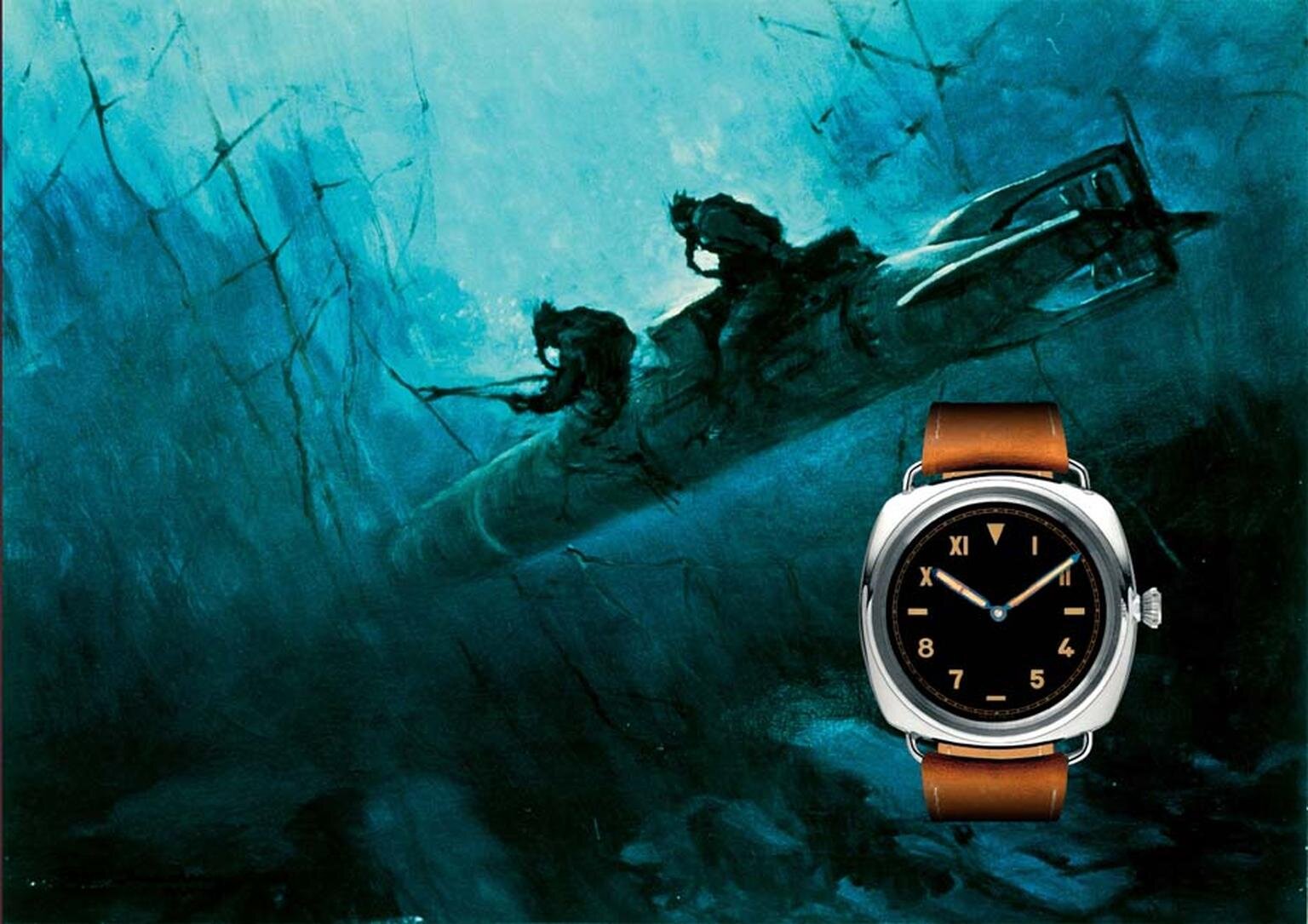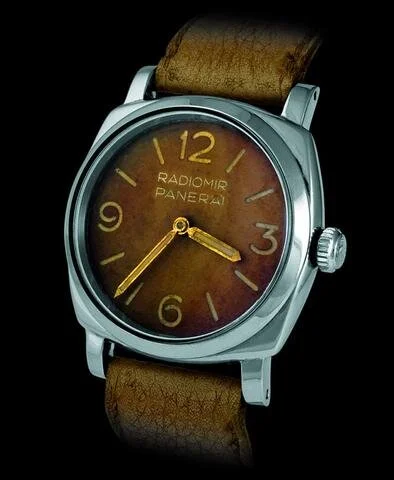The History of Panerai
A definitive account of the building blocks that led to Panerai’s success as a Luxury Watch Brand.
Panerai first began in 1860 when Giovanni Panerai opened a tiny watch shop on the Ponte alle Grazie spanning the Arno River. The bridge was destroyed in 1944 by retreating Germans, but the original 13th century bridge - at that time the oldest and longest bridge in Florence - had small shops on it, much like the Ponte Vecchio does today. Giovanni's Orologeria was the first watch and clock shop in Florence and sold imported Swiss pocket watches. As related in Giampiero Negretti's excellent book on Panerai's history, pocket watches were sent from Switzerland unassembled, requiring the Florentine entrepreneur to invest in a workshop and learn the tricks of the trade.
As purveyors of the finest Swiss watch brands, Giovanni's descendants, Guido and Giuseppe Panerai, struck gold when Italy's Regia Marina, or Royal Navy (1861-1946), contacted them for precision pocket watches and chronographs, many of them modified by Panerai watches to meet the Navy's requirements. By the beginning of World War I, Panerai was making sophisticated made-to-measure precision instruments for the Italian Navy. A brilliant breakthrough was just around the corner, and its decision to combine Radiomir, a luminous radioactive substance that glowed in the dark, with a gun sight, for example, allowed weapons to be fired in total darkness. Luminescence was the key to success and Panerai was able to outshine its rivals with the application of Radiomir paste to its high-precision instruments, illuminating timers for detonators, and underwater wrist depth gauges, wrist compasses and torches.
Radiomir is derived from radium, one of the most radioactive chemicals on the periodic table and was discovered by Nobel prize-winning scientist Marie Curie - who died from its lethal side-effects. The virtue of Radiomir, which was the name Panerai patented for its mix of radium bromide and zinc sulphide in 1916, was its superlative luminescence and capacity to glow in the darkest, dankest waters. Using Panerai's luminescent underwater instruments, in 1918 Italian stealth commandos Rossetti and Paolucci were able to steer their modified torpedo - known as the leech - and sink the Austrian dreadnought battleship SMS Viribus Unitis by planting a limpet mine on the hull of the ship. The brightness of Radiomir was so intense at night that commandos would smear mud or seaweed on the dials to avoid being spotted.
Such was the success of these stealth missions that, in 1935, the Italian Royal Navy asked Panerai to develop waterproof and luminous men's watches. The specs were that the watch have a large dial and be perfectly legible in even the most adverse conditions, including muddy port waters. In 1936, 10 prototypes of the Panerai Radiomir watch were distributed among the frogmen commandos, thus becoming the first professional underwater military watches in history. What is particularly interesting for watch fanatics is the fact that the movement and case were entrusted by Panerai to Rolex.
As the inventor of the world's first civilian watertight watch in 1926, Rolex had the technological know-how. The first Panerai Radiomir men's watches measured a hefty 47mm in diameter and were housed in a cushion-shaped steel case with a screwed-down crown and caseback and soldered lugs. The dials featured a mix of luminescent Arabic and Roman numerals and the men's watches came with a long, greased waterproof leather strap that could be worn over the bulky diving suits. Modifications requested directly by the divers ensued over the following years and, by 1940, the Panerai Radiomir assumed its definitive physiognomy, which any Paneristi would recognise in a flash. With a stronger case made from a single block of steel for increased underwater resistance and reinforced lugs, the dial of the watch was simplified with just four large Arabic numerals at 12, 3, 6 and 9 o'clock, plus hour and minute hands. Like its predecessor, the watch boasted superior luminosity thanks to the use of a sandwich dial consisting of two overlapping plates. The upper dial featured the four large perforated numerals and indices allowing the thick layer of radium paste on the lower dial to glow through the holes.
By 1949, the toxic effects of radium were better documented and the less toxic element tritium was adopted by Panerai watches and patented under the Luminor trademark. The Panerai Luminor watch of 1950 confirmed the company's vocation as a professional dive watch manufacturer. With a very similar dial and case, the big difference over the Radiomir model was the large crown-protecting bridge with a lever to increase the watch's waterproof properties - something the Luminor family still bear today.
The Mare Nostrum watch of 1943 was designed for naval deck officers and featured a two-counter chronograph and the hallmark luminescence that characterised the brand's products.
Word of these superlative Panerai watches spread and, in 1956, the Egyptian Navy commissioned a watch that would become known as L'Egiziano. To describe this watch as large is an understatement. Its formidably strong 60mm case featured a novel rotating bezel with four studs to indicate immersion times - capable of withstanding depths of up to 200 metres - and an impressive eight-day power reserve, which reduced the frequency of winding operations. In addition to the crown-protecting device, this massive diving partner featured a small seconds counter on the dial at 9 o'clock. L'Egiziano still makes guest appearances in Panerai's limited edition collections, such as this 2009 whopper in brushed titanium - a definite plus over the original steel version thanks to its lightweight properties.
The Big Egyptian was a truly transitional model for Panerai as it marked both their move away from Rolex, and the beginning of their twilight years as a supplier of tactical watches to the military as the world was beginning an era of relative peace. The company’s instrument manufacture entered a period of decline until 1972.
By 1972, the last Panerai descendant, Giuseppe Panerai, died without offspring and the company was run for a brief period by his widow until the brand was given an ultimatum. Either Dino Zei, a retired Navy Colonel who had been in charge of procuring instruments and armament for the Navy's top-secret operations, take over the company, or the brand's main client - the Navy - would close it down. Zei changed the name of the company to Officine Panerai and continued to supply the Navy with wrist depth gauges, compasses and underwater torches. In 1993, Zei presented a collection of limited edition civilian watches inspired by historical models created for the World War II commandos, which were immediately swept up by collectors.
In a moment of cinematic serendipity, a Panerai watch unknowingly made a screen cameo on the wrist of American actor Sylvester Stallone in the 1996 film Daylight. Now revealed as a fabricated story, the actor apparently saw the Panerai Luminor Marina Submersible in a shop window while filming on location in Rome and was drawn to the imposing character of the military watch, which fit perfectly with his on-screen persona. "When I saw the watch, I immediately felt that it had star power," remarked the Hollywood muscle man who, like many civilians, had never heard of the brand. In return for the unsolicited exposure, a solid friendship has developed between Sly and the brand and there is even a collection of Panerai Luminor Submersible Slytech models in his honour.
In 1997, Officine Panerai was acquired by the Richemont Group (then known as the Vendôme Group) and the entire military production branch of the company was closed. A year later, the first collection of Panerai watches was presented to the public. Large, functional, military watches coupled with pure Italian design sparked an overwhelmingly enthusiastic response spawning a fan club of die-hard Paneristi.
American designer Ralph Lauren, who has a large collection of Panerai vintage watches, put his finger on what makes this brand so appealing to men today: "The luxury of Panerai grew out of its heritage and the purposefulness of each detail. Panerai watches were not about the latest fashion, they were designed to work in specific conditions. Their form and beauty were secondary to their function; they're rugged, utilitarian and handsome."
And just in case anybody was concerned about the toxicity of the luminosity of the dials, Panerai uses the best Swiss luminescent material known as Super-LumiNova on all its watches today.
The headquarters of the company are still in Italy, but production is now in Switzerland in a state-of-the-art manufacture just outside Neuchâtel. The first in-house movement appeared in 2005. Angelo Bonati, ex-CEO since 1997, sees no conflict whatsoever in making luxury watches with a profound Italian soul and past, beating to a Swiss heart: "We have always declared that Panerai has Italian taste and Swiss technology because you cannot have the same efficiency in terms of know-how in Italy regarding watches." Watches are often sold out before they reach the retailer's shelves and for practically the last two decades Officine Panerai has stayed on course, true to the quintessential and now iconic design of its star models: the Radiomir and the Luminor. Bonati sees no reason to change direction or adapt models for different markets. "We surprise people by being coherent," he adds, and for Paneristi fans around the world, this is music to their ears.















